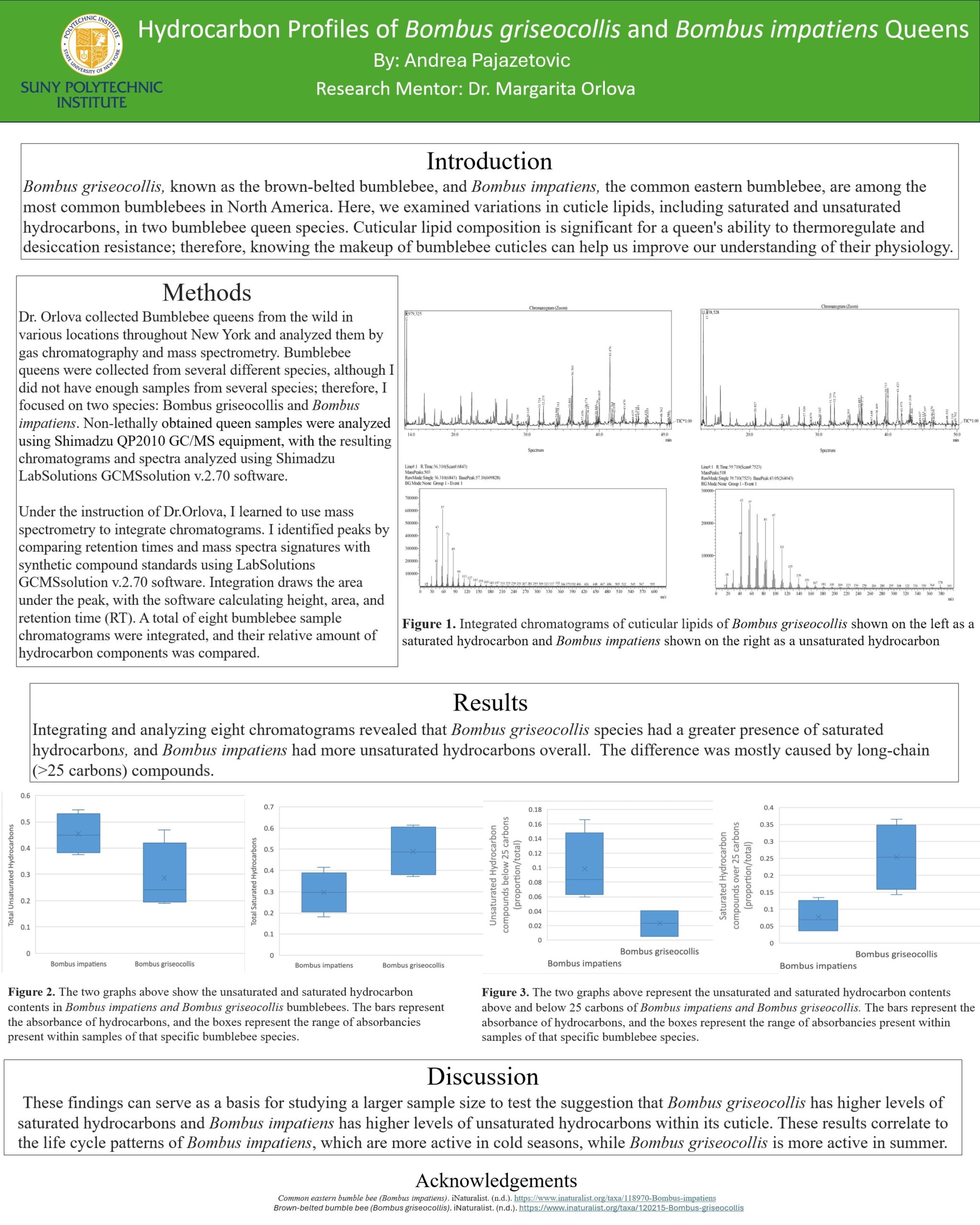Hydrocarbon Profiles of Bombus griseocollis and Bombus impatiens Queens
Andrea Pajazetovic, Margarita Orlova
Biology, College of Arts and Science, SUNY Polytechnic Institute, Utica, NY, USA
Bombus griseocollis, known as the brown-belted bumblebee, and Bombus impatiens, the common eastern bumblebee, are among the most common bumblebees in North America. Here, we examined variations in cuticle lipids, including saturated and unsaturated hydrocarbons, in two bumblebee queen species. Cuticular lipid composition is significant for a queen’s ability to thermoregulate and desiccation resistance; therefore, knowing the makeup of bumblebee cuticles can help us improve our understanding of their physiology. Our chromatograms demonstrated a significant presence of Bombus griseocollis species had a greater presence of saturated hydrocarbons, and Bombus impatiens had more unsaturated hydrocarbons overall. The difference was mostly caused by long-chain (>25 carbons) compounds. Our findings suggest the distinctness between long-saturated hydrocarbons and long-unsaturated hydrocarbon compounds within the bumblebee cuticle, which may be related to the difference in the species’ life cycles and hydrocarbon role in temperature regulation.

